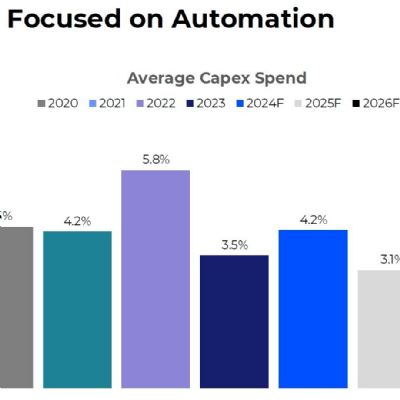A Quote is Only as Good as Its Calculations
June 1, 2015Comments
Drill down into your operations to accurately ascertain the right costs, then use these costs correctly to produce real-world quotes.
 Manufacturers must use the best method of costing jobs to quote competitively and grow the business profitably. Commonly used assumptions about single factory rates and “free” equipment must be replaced. Calculating fully loaded labor rates, applying depreciation costs to all working equipment, and correctly applying overhead to workcenters and operations are critical to making profit and growing business value.
Manufacturers must use the best method of costing jobs to quote competitively and grow the business profitably. Commonly used assumptions about single factory rates and “free” equipment must be replaced. Calculating fully loaded labor rates, applying depreciation costs to all working equipment, and correctly applying overhead to workcenters and operations are critical to making profit and growing business value.
It’s no secret that business is very competitive. Quoting that uses broad generalities and “rules of thumb” will not gain new customers nor more opportunities from existing customers. The business will succeed when the right costing methods and margins are used to quote winning orders.
Traditional Quoting Methods
The traditional method of costing parts was based on the average hourly direct-labor rate and then increasing that value with several overhead percentages. These company-wide calculations included adding percentages for employee benefits, manufacturing overhead and selling/general/administrative overhead. This method, while often mathematically correct, proves ineffective in accurately costing the operations required to produce each part.
All direct-labor employees are rarely paid the same and all parts are not produced using the same routings or series of operations. So why use quote rates with those assumptions? Making the right calculations to develop accurate cost rates and managing markup decisions at the net-income level are the best ways to win jobs.
Adding three large amounts of overhead cost also is misleading as all employees do not have the same overhead costs. CNC equipment costs more than welding equipment and uses more energy. More advertising and selling focus may be required for newer parts or products while jobs/parts made for many years have less selling resources directed toward them. This logical variation does not support the company-wide rates and large overhead percentages used by many manufacturers to quote work.
Get More Specific in Calculating Costs
The more specific you can be with calculating cost and assigning overhead to the correct operations, the better your cost rates will be and the more competitive your quoting will become. Consider measuring and using the best possible costs for each manufacturing process.
Don’t increase the labor rates of your direct-labor employees with a general percentage of employee overhead. Be more specific about which employees work in each workcenter. For each employee, add to his/her base labor rate the company’s cost for:
• FICA insurance;
• State and Federal unemployment taxes;
• Workers compensation;
• Insurances—health, dental, group term life;
• Holiday, personal and vacation days off; and
• Other costs (uniforms, education, etc.) that apply to each employee.
You also can calculate the full cost of overtime by adding to the fully loaded labor rate an additional 50 percent of the base labor rate and the associated additional cost of workers compensation and employer’s FICA tax on that hourly rate premium. This will provide the full cost of each employee in a workcenter. Average the cost of the employees in the workcenter to derive a fully loaded labor rate for the workcenter. This will be the first element of the fully loaded workcenter rate.
Also list the total straight-time and overtime hours worked by each employee in each workcenter. This includes employees who work in more than one workcenter. If you notice that the overtime worked in a workcenter exceeds 15 percent of the straight time worked, consider quoting the average fully loaded overtime rate for the workcenter with each job that you estimate.
Significant overtime is difficult to factor into each quote as it never is clear at the time of quoting whether a job will be worked using straight-time hours, overtime hours or both. Quoting a fully loaded overtime rate will smooth out the variation in this timing of the work and related cost.
Many companies hire temporary workers throughout the year. Include temporary-labor hours in the average cost of fully loaded labor rates for the workcenter. The rate paid to the temporary agency already is fully loaded, making an analysis of the rate components unnecessary. Use weighted-average hourly rates rather than simple average hourly rates to calculate the fully loaded rate for the workcenter, as temporary-labor rates tend to decrease the workcenter fully loaded labor rate.









